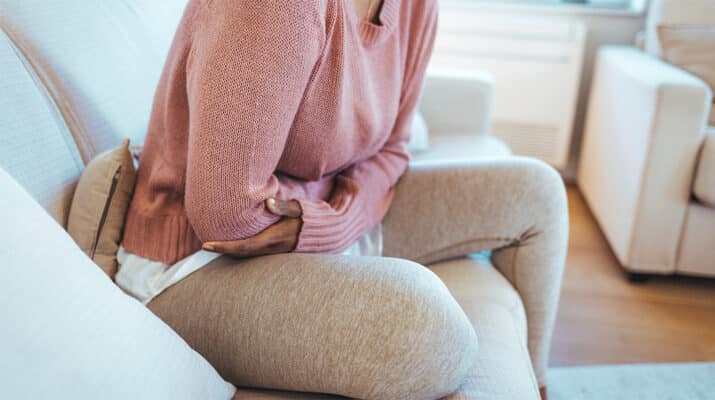By Barbara Pierce
The pain we experience during our periods can cause mild to severe cramping and pain. Here are some things to know about that pain and what helps relieve it.
1. Are Period Cramps Common?
Most women experience some level of pain during their menstrual cycle. This pain is referred to medically as dysmenorrhea. According to the ClevelandClinic.org, mild to moderate cramping is normal. About 60% of us have mild pain. However, some women have such severe pain that it interferes with their day-to-day life and prevents them from doing things they enjoy.
About 5% to 15% of women report period pain that’s so severe it affects their daily life. However, as healthcare providers believe many women don’t report menstrual pain, that number may be even higher.
2. Why Are Period Cramps so Painful?
What you’re feeling is a contracting, a tightening and relaxing of your uterus. That is happening in order to shed your uterine lining. Experts aren’t entirely sure why some people have more painful periods; there may not be a clear explanation other than everyone’s body is different.
The pain typically begins just before your period and subsides after a few days.
3. Who Is Most at Risk for Painful Cramps?
According to ClevelandClinic.org, you may be more likely to have painful periods if you’re younger than 20, your periods are heavy or last longer than seven days, you smoke, have a mother with painful cramps or if you’re under high stress.
For most women, painful periods become less painful as we get older. They may also improve after giving birth.
4. What Can I Do to Relieve Cramps?
Though we can’t prevent cramps, there are several things we can do to help cramps from being as intense.
Over-the-counter pain relievers can help with cramps and other period-related pain. While pretty much any type is bound to offer some relief, ibuprofen (Advil, Motrin, Aleve) is most helpful. Starting the pain reliever the day before you expect your period to being can help control the pain (mayoclinic.org).
Prescription strength medication is also available through your health care provider, if you need more help. The hormone in birth control also can reduce the severity of cramps. If your cramps are caused by a disorder such as endometriosis or fibroids, surgery might help (mayoclinic.org.)
Soaking in a hot bath is another way to relax your muscles; enhance the pain-relieving power of a good soak by adding a few drops of Epsom salt or essential oils.
Low-to-medium intensity exercise may help reduce pain caused by period cramps.
Yoga can help by relaxing the uterus and promoting blood flow, said Lorriane Arsenault, founder and operator of The Place at Center in Canastota where she teaches yoga.
Yoga poses can be held for five to 20 minutes or longer if comfortable and supported, she added. For most poses it’s advisable to start with shorter times and gradually increase as one feels more comfortable and the body responds to the poses.
“Salamba Supta Baddha Konasana with props is a favorite of my students and is easily held for 15 to 20 minutes,” she said. Also known as supported reclining bound angle pose, this involves lying on the back with the soles of the feet together and knees open to the sides, supported by props like a bolster or blocks.
“In yoga practice, we can help the body, mind and heart to find balance through yogic breathing (slow belly breathing) and slow mindful movement,” said Marchell Scarano, owner and operator of Yoga and Wellness in Little Falls.
Recommended postures include triangle pose.
Avoid caffeine and salty or fatty foods as they can cause water retention, bloating and discomfort.
Stay hydrated.
Avoiding smoking cigarettes and drinking alcohol.
5. When Should I See a Healthcare Provider?
Although period cramps are very common, severe pain isn’t normal. See a health care provider if you have cramps so painful that you can’t go about your daily activities or started having severe cramps after age 25. Sometimes extreme pain can be a sign of a more serious health condition that needs treatment, such as endometriosis or fibroids.
Also, a health care provider can offer prescription strength medication or the hormone in birth control also can reduce the severity of cramps.
It may be helpful to keep track of your periods and the days on which pain is the worst so you can tell your provider. If you notice other symptoms, like headaches or heavy bleeding, you should keep track of those, too. Your provider will probably ask you when you started getting your period, how long your symptoms last, if you’re sexually active or if other people in your biological family have problems with their periods.
Don’t suffer in silence; help is available.

